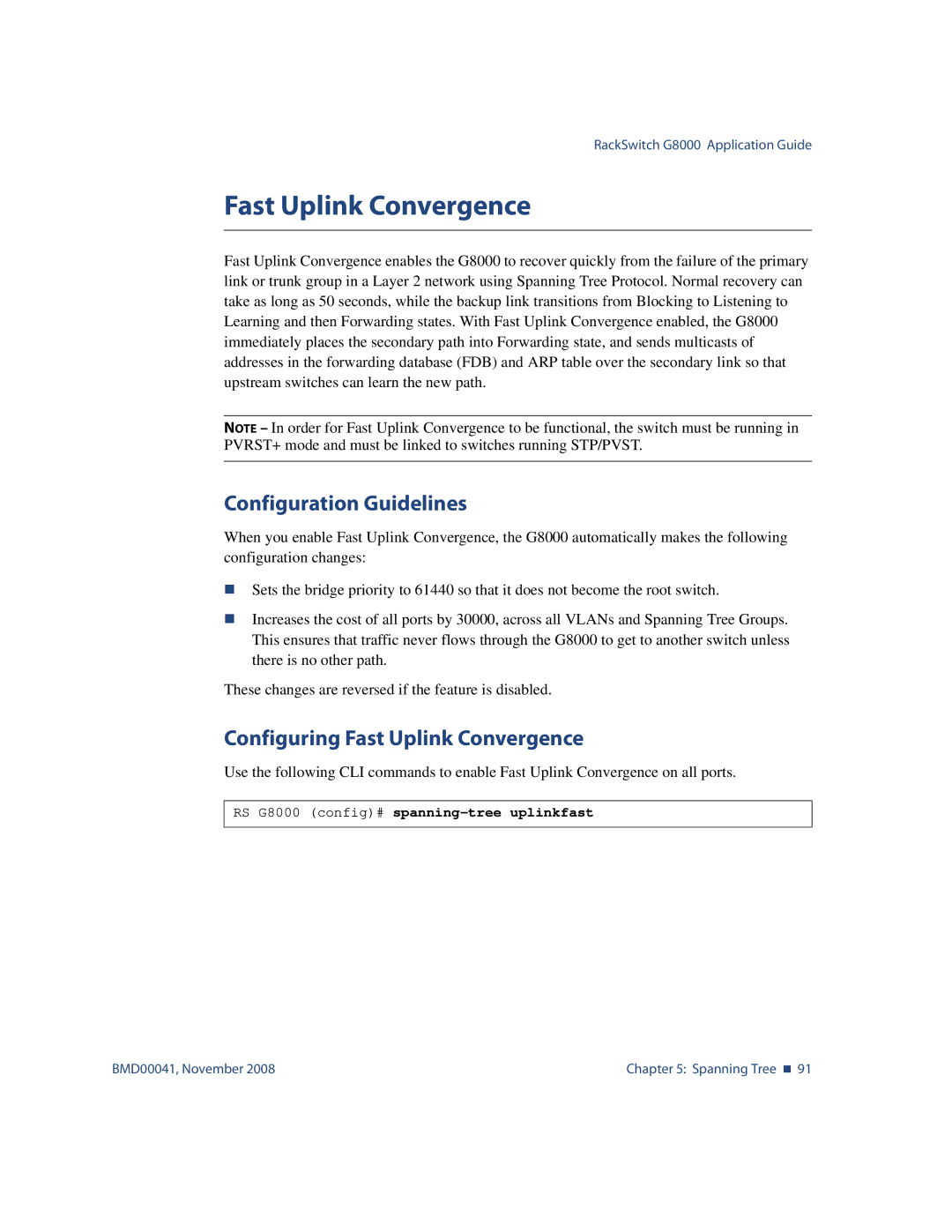
RackSwitch G8000 Application Guide
Fast Uplink Convergence
Fast Uplink Convergence enables the G8000 to recover quickly from the failure of the primary link or trunk group in a Layer 2 network using Spanning Tree Protocol. Normal recovery can take as long as 50 seconds, while the backup link transitions from Blocking to Listening to Learning and then Forwarding states. With Fast Uplink Convergence enabled, the G8000 immediately places the secondary path into Forwarding state, and sends multicasts of addresses in the forwarding database (FDB) and ARP table over the secondary link so that upstream switches can learn the new path.
NOTE – In order for Fast Uplink Convergence to be functional, the switch must be running in PVRST+ mode and must be linked to switches running STP/PVST.
Configuration Guidelines
When you enable Fast Uplink Convergence, the G8000 automatically makes the following configuration changes:
Sets the bridge priority to 61440 so that it does not become the root switch.
Increases the cost of all ports by 30000, across all VLANs and Spanning Tree Groups. This ensures that traffic never flows through the G8000 to get to another switch unless there is no other path.
These changes are reversed if the feature is disabled.
Configuring Fast Uplink Convergence
Use the following CLI commands to enable Fast Uplink Convergence on all ports.
RS G8000 (config)# spanning-tree uplinkfast
BMD00041, November 2008 | Chapter 5: Spanning Tree 91 |
